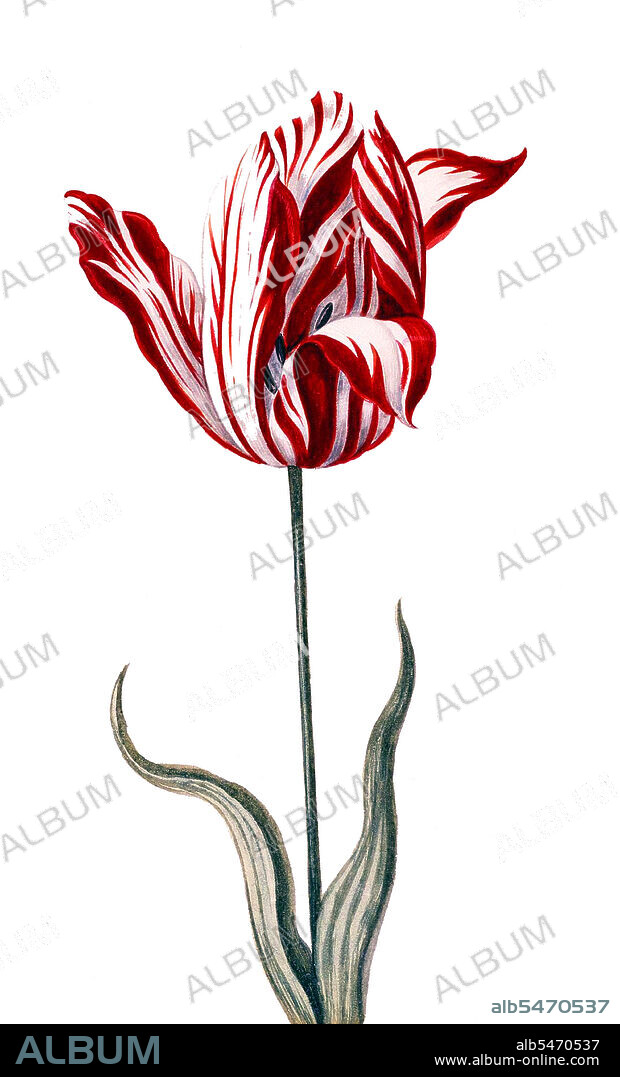alb5470537
The 'Semper Augustus' tulip, unknown artist, early 17th century.

|
Ajouter à une autre Lightbox |
|
Ajouter à une autre Lightbox |



Avez-vous déjà un compte? S'identifier
Vous n'avez pas de compte ? S'inscrire
Acheter cette image.
Sélectionnez l'usage:

Titre:
The 'Semper Augustus' tulip, unknown artist, early 17th century.
Légende:
Voir la traduction automatique
Tulip mania or tulipomania (Dutch names include: tulpenmanie, tulpomanie, tulpenwoede, tulpengekte and bollengekte) was a period in the Dutch Golden Age during which contract prices for bulbs of the recently introduced tulip reached extraordinarily high levels and then suddenly collapsed. At the peak of tulip mania, in February 1637, some single tulip bulbs sold for more than 10 times the annual income of a skilled craftsman. Although tulips are generally associated with the Netherlands, commercial cultivation of the flower began in the Ottoman Empire. The tulip, or lale as it is also called in Iran and Turkey, is a flower indigenous to a vast area encompassing arid parts of Africa, Asia, and Europe. The word tulip, which earlier appeared in English in forms such as tulipa or tulipant, entered the language by way of French tulipe and its obsolete form tulipan or by way of Modern Latin tulipa, from Ottoman Turkish tulbend.
Crédit:
Album / Pictures From History/Universal Images Group
Autorisations:
Taille de l'image:
3250 x 5365 px | 49.9 MB
Taille d'impression:
27.5 x 45.4 cm | 10.8 x 17.9 in (300 dpi)
Mots clés:
ART (CATÉGORIE) • ART • ART, PEINTURE • FLEUR • FLEURS • FLORE • HISOIRE • HISTOIRE • HOLLANDAIS • HOLLANDAISE • HOLLANDE • PAYS BAS • PEINTURE • TABLEAU • TABLEAUX • VETEMENT: HOLLANDAIS


 Pinterest
Pinterest Twitter
Twitter Facebook
Facebook Copier le lien
Copier le lien Email
Email
